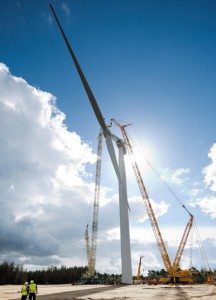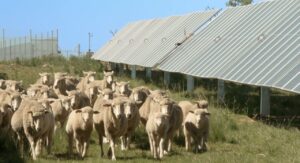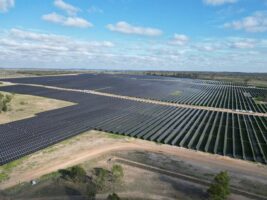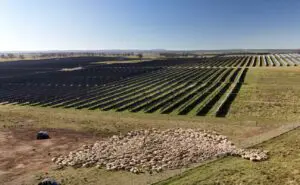In case you hadn’t noticed, there remain some people in Australia – some of them in positions of significant political power – who still find it hard to accept that an advanced industrial economy can run on renewable energy.
The Luddites continue to run the old “baseload power” argument, drawing their comfort from the line that the sun doesn’t always shine and the wind doesn’t always blow, while conveniently ignoring the fact that coal fired generators don’t always burn. And in the coming energy transition, what is needed most is not inflexible baseload but rather dispatchable renewable energy, storage, and enhanced transmission.
Which is why it’s good to see the arrival of openCEM – the free to use, open-source, capacity expansion model of the NEM now available at http://www.opencem.org.au.
With any luck, by demonstrating how all these technologies can be optimally orchestrated, openCEM can help erode these rusted-on myths.
As RenewEconomy reported yesterday, openCEM has been developed by ITP Renewables, together with the Centre for Energy and Environmental Markets at University of New South Wales, the Energy Transition Hub at the University of Melbourne, and ThoughtWorks Australia.
The model optimises for a least-cost solution while maintaining system reliability. For users, openCEM will obey specified constraints, including policy objectives such as renewable energy or emission targets, and reveals when, where and what kind of energy generation and storage capacity, and transmission capacity should be added.
The purpose of modelling is to gain insight into the workings of complex systems. This is achieved by comparing numerous scenarios to reveal non-intuitive cause and effect relationships. For this reason, a model that isn’t free to use is of limited value.
In the same way, models that are not transparent cannot be trusted. As Tristan Edis put it when the beta version was released a few months ago, energy sector modelling efforts in Australia have often been opaque and politicised. Only those with deep pockets and an agenda to prosecute have been willing to meet the high cost of commissioning modelling work from the few private firms that offered it.
Over time, because of this politicisation, and because the workings of the privately-owned models are not transparent, trust in modelling results has diminished. openCEM, by contrast, being free and open to scrutiny, is apolitical and academic.
So how does openCEM actually work?
Ten pre-run scenarios (selected to demonstrate the model’s capability) are presented on the openCEM website. The graphics essentially display capacity and dispatch of each technology for each of the 16 NEM planning zones, and energy trade between the zones. Within each scenario a slider bar allows users to jump forward in five yearly increments out to 2050.
Comparing two scenarios side by side is not so easy, but possible if you can use two screens.
There’s a lot to unpack, but at first glance the key results of the pre-run scenarios appear to be that:
– openCEM reflects what other modelling studies (such as the ISP) have shown; that the least-cost replacement of the NEM fleet includes lots of renewables. A combination of wind, solar, dispatchable renewable generation (hydro, biomass and solar thermal) and storage can meet increasing shares of electricity demand into the future at costs that are competitive with conventional generation.
– Most scenarios show electricity costs that are similar. This is fundamentally because there is little difference in the forecast prices of wind, solar and storage, dispatchable renewable generation and conventional generation. What this also means is that there are many technological pathways to achieve any particular outcome. In other words, we are spoiled for choice.
– openCEM shows that orchestration of many renewable and storage technologies, and timely transmission upgrades, is the cheapest way to achieve emission reduction or renewable target policy objectives. That is not necessarily intuitive, and some might be surprised that the model doesn’t rely strongly on just one or two relatively cheap technologies. Rather, the optimisation calls upon a wide range technology options, each with unique cost and operational characteristics, to simultaneously satisfy demand across the system.
The openCEM results indicate that, to keep pace with the energy transition, it is crucial that regional and inter-regional interconnectors are upgraded in a timely manner. For example, the model predicts large expansions in transmission between Northern SA, Country Victoria and South West NSW by 2025, strengthening of intra-regional transmission in NSW by 2030, and construction of the Marinus link by 2035 in most scenarios.
The mix of energy generation out towards 2050 depends on how we get there. Early action to transition to renewables favours wind and PV, but other technologies such as solar thermal with storage become cheaper later. Thus, more of the latter will be built if the transition is delayed.
The website graphs show average electricity cost calculated as the sum of all the system costs (including build, operational and repayment costs) divided by the amount of electricity generated. I asked the development team at ITP for the underlying data and calculated the system costs divided by energy demand.  This graph shows system cost per unit of demand ($/MWh) as an approximation for the price of wholesale electricity for the base case and three example policy scenarios. My observations are that:
This graph shows system cost per unit of demand ($/MWh) as an approximation for the price of wholesale electricity for the base case and three example policy scenarios. My observations are that:
– Except for the most challenging scenario (IPCC 1.5C), cost does not increase much, nor vary substantially between scenarios. Remember $10/MWh is equal to just 1c/KWh;
– The cost of the 50% renewable energy scenario is marginally higher than the Base Case (similar to the ISP Neutral Scenario) in initial years but quite similar after the target is met;
– Snowy 2.0 is quite similar to the Base Case.
Although all scenarios have to deal with planned retirement of conventional generation, the cost effects of the retirement of coal generation around 2035 are more noticeable in the base case and Snowy 2.0.
The cost of a strong renewable energy target like 99 per cent by 2050 is similar to the 50 per cent by 2030 out to 2040, staying somewhat higher than the base case as targets continue to progress.
The IPCC 1.5°C scenario projects that costs would be relatively high comparted to the Base Case because of the substantial amount of near-term investment required. At the highest point, average wholesale electricity costs are around $45/MWh (or 4.5c/kWh) higher than the base case, but over time they reduce to only approximately $15/MWh more.
To those who are familiar with the price of renewable energy and storage, none of these results are particularly startling, but it is very interesting to delve into the detail and see what openCEM projects about what will (should) be built, where and when.
openCEM is an active open source project which means work is ongoing to refine modelling assumptions and functionality. Planned improvements to openCEM, which are listed on the site, include updating input data to ISP 2019 when it becomes available and including demand side participation in dispatch calculations. I suspect the latter will produce some interesting results.
ITP and the development partners have indicated that the hope a community of collaborative users will help improve the model over time. For my part, I’ve asked ITP if they could run scenarios where renewable energy dispatched exceeds 100% – simulating demand of a hypothetical hydrogen economy for example. They said they would give it whirl and report back.
What other scenarios shall we investigate?










